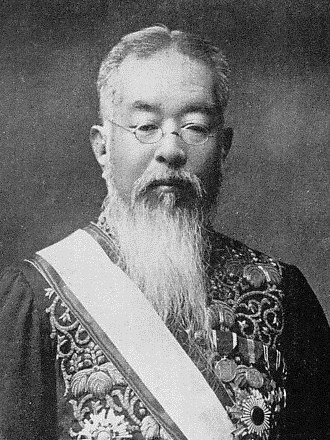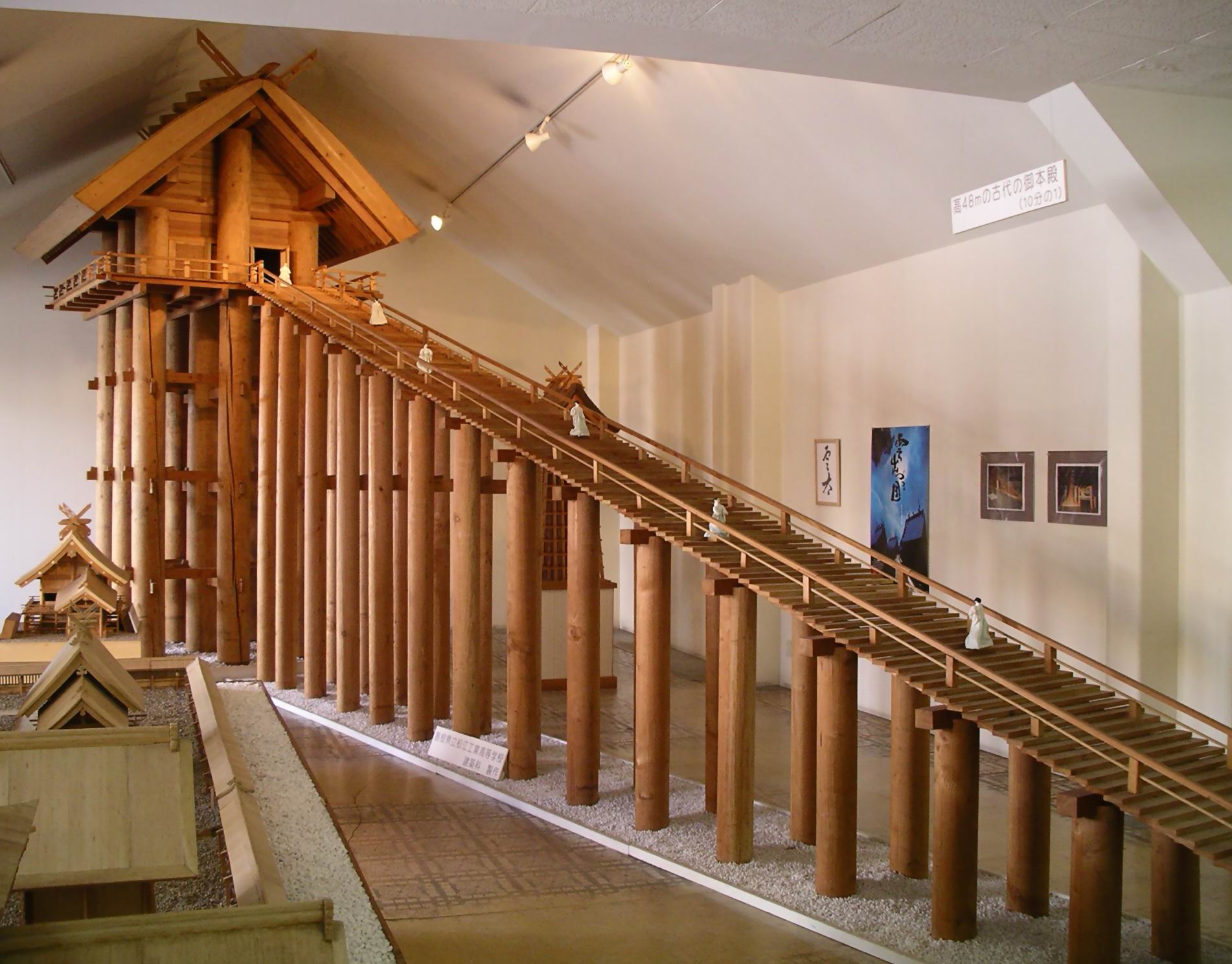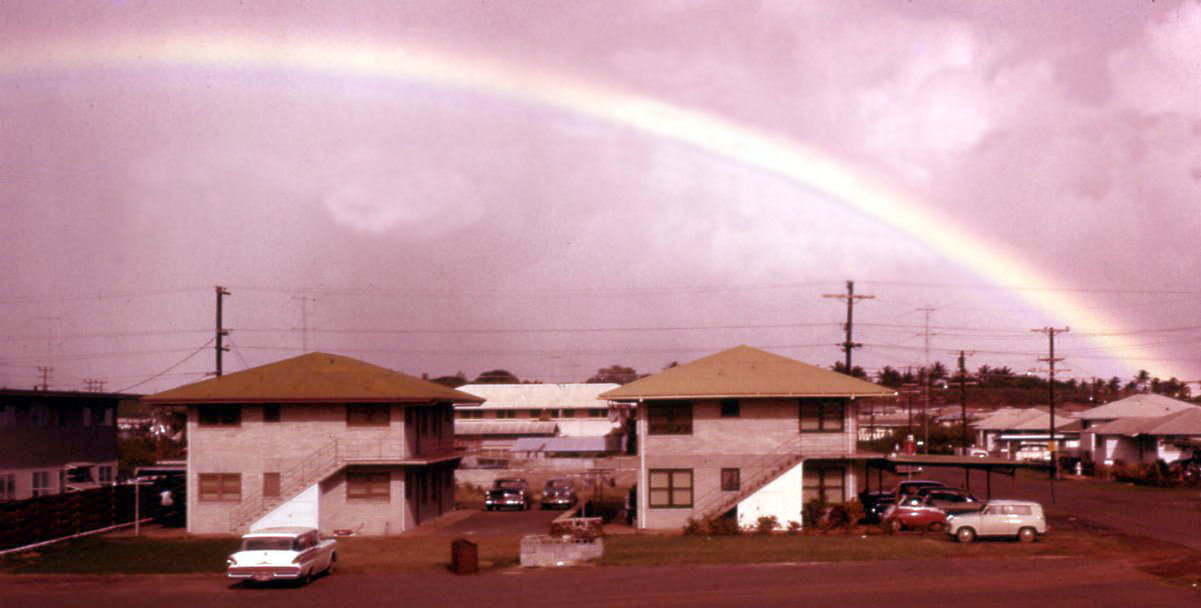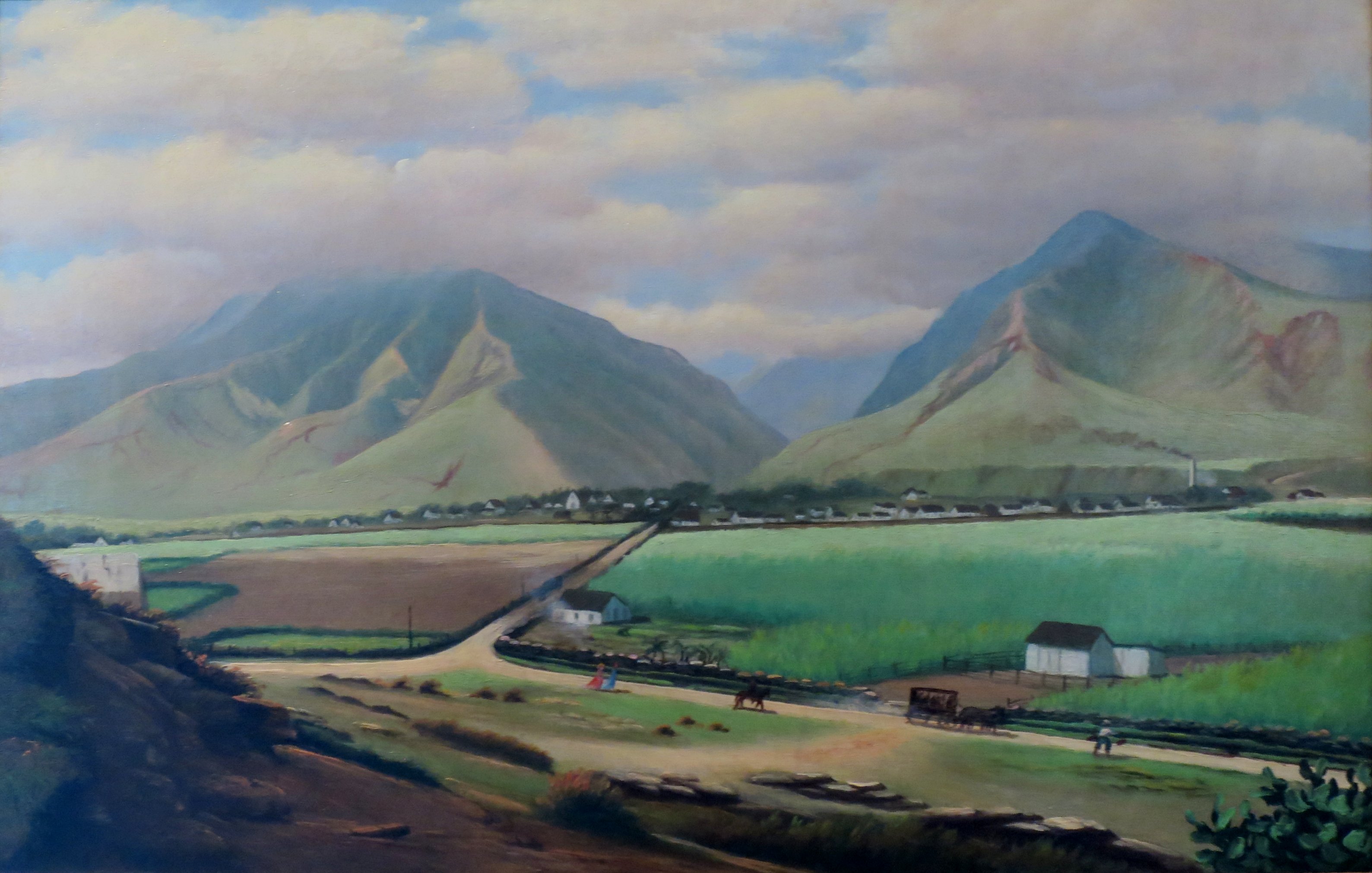|
Izumo-taishakyo
is a Japanese Shinto grouping. It was established by Takatomi Senge (1845–1918), the 80th head priest of Izumo-taisha in 1882, as one of the original thirteen sects of ''Kyoha Shintō Rengokai'' (Association of Sectarian Shinto), during the Meiji era in Shimane Prefecture. Overview There is a headquarters (Cultural Affairs Office) on the precincts of Izumo Taisha in Shimane Prefecture and Izumo City, and the staff of Izumo Taisha is also the staff of Izumo-taishakyo. However, while Izumo-taisha itself is affiliated with Jinja Honcho, legally speaking, Izumo-taishakyo is an independent religious corporation separate from Jinja Honcho and associated with Kyoha Shintō Rengokai. Thus Izumo-taishakyo walks a middle ground between Shrine Shinto and Sect Shinto. During the Meiji Period, priests from Izumo Taisha were collected to participate in the creation of a centralized State Shinto. However, due to conflicts primarily with the traditions of Ise-jingu, the Izumo tradition was s ... [...More Info...] [...Related Items...] OR: [Wikipedia] [Google] [Baidu] |
Sect Shinto
Sect Shinto () refers to several independent organized Shinto groups that were excluded by law in 1882 from government-run State Shinto. These independent groups may have more developed belief systems than mainstream Shrine Shinto which focuses more on rituals. Starting in the late Edo period, Sect Shinto became established in the Meiji era, after the Meiji Restoration. One denomination (Jingu-kyo, affiliated with the Ise Jingu Shrine) left during the war, and the final group (before the war) consisted of 13 denominations, which were once also referred to as the 13 Shinto schools. In a broad sense, it includes "Oomoto" which newly joined the "Sect Shinto Federation" after the war. (After the war, "Oomoto" newly joined the "Sect Shinto Federation," while "Tenrikyo" and " Shinto Taiseikyo" left, so that the number of denominations belonging to the "Sect Shinto Federation" is currently 12.) In contrast, to shrine Shinto, which is an aggregation of various shrines and customary be ... [...More Info...] [...Related Items...] OR: [Wikipedia] [Google] [Baidu] |
Izumo-taisha
, officially Izumo Ōyashiro, is one of the most ancient and important Shinto shrines in Japan. No record gives the date of establishment. Located in Izumo, Shimane Prefecture, it is home to two major festivals. It is dedicated to the god , famous as the Shinto deity of marriage and to Kotoamatsukami, distinguishing heavenly ''kami''. The shrine is believed by many to be the oldest Shinto shrine in Japan, even predating the Ise Grand Shrine. A style of architecture, ''taisha-zukuri'', takes its name from the main hall of Izumo-taisha. That hall, and the attached buildings, were designated National Treasures of Japan in 1952. According to tradition, the hall was previously much taller than at present. The discovery in the year 2000 of the remains of enormous pillars has lent credence to this. The shrine has been rebuilt every 60 to 70 years to maintain the power of the ''kami'' and maintain architectural techniques. This regular rebuilding process is called "Sengū" (遷宮) an ... [...More Info...] [...Related Items...] OR: [Wikipedia] [Google] [Baidu] |
Amenominakanushi
Ame-no-Minakanushi (アメノミナカヌシ, lit. "Lord of the August Center of Heaven") is a deity (''kami'') in Japanese mythology, portrayed in the ''Kojiki'' and the '' Nihon Shoki'' as the very first or one of the first deities who manifested when heaven and earth came into existence. Name The ''kami'' is given the name 'Ame-no-Minakanushi-no-Kami' (天之御中主神; Old Japanese: ''Ame 2-no2-Mi1nakanusi'') in the ''Kojiki'' (ca. 712 CE). The same deity is referred to as 'Ame-no-Minakanushi-no-Mikoto' (天御中主尊) in a variant account cited in the '' Nihon Shoki'' (720 CE). Mythology The ''Kojiki'' portrays Ame-no-Minakanushi as the first god to appear in the heavenly realm of Takamagahara after the emergence of heaven and earth from the primeval chaos: Unlike later generations of ''kami'', the first seven gods were "single" or "solitary" in that they came into being one by one, without any counterparts, and are described as hiding their presence upon coming into ... [...More Info...] [...Related Items...] OR: [Wikipedia] [Google] [Baidu] |
Aiea, Hawaii
Aiea (; haw, ʻAiea, ) is a census-designated place (CDP) located in the City and County of Honolulu, Hawaii, United States. As of the 2010 Census, the CDP had a total population of 9,338. Geography Aiea is located at (21.385900, −157.930927). According to the United States Census Bureau, the CDP has a total area of , of which, of it is land and of it (5.71%) is water. Kamehameha Highway (Hawaii Route 99) divides most of Aiea from the shore of Pearl Harbor (mostly US government property), and the parallel major thoroughfare, Interstate H-1, further cuts the town's commercial district into two distinct areas. These east–west routes (and other streets, such as Moanalua Road) connect Aiea to Pearl City, immediately adjacent on the west, and Halawa, adjacent on the east. The residential area known as Aiea Heights extends up the ridgeline above the town. The communities of Newtown Estates and Royal Summit are located at the western edge of Aiea near its border with P ... [...More Info...] [...Related Items...] OR: [Wikipedia] [Google] [Baidu] |
Pearl City, Hawaii
Pearl City is an unincorporated community and census-designated place (CDP) located in the Ewa District and City & County of Honolulu on the Island of Oahu. As of the 2010 Census, the CDP had a total population of 47,698. Pearl City is located along the north shore of Pearl Harbor. Waimalu borders Pearl City to the east, while Waipahu borders the west. The U.S. postal code for Pearl City is 96782. History Early-day Pearl City had an array of rice paddies and fields that were plowed with water buffalo that would haul a two-wheeled cart. In the early 1880s, Pearl City was the final stop for Benjamin Franklin Dillingham's Oahu Railway, a mud wagon driven by a four-horse team. Lots for an as-yet-to-exist "Pearl City" went on sale in 1889, after completion of the actual rail line. Near the outskirts of Pearl City, the Remond Grove, an area where people could be entertained with piano, banjo, trumpet, and saxophone performances, was a popular entertainment spot in the early 1900s. ... [...More Info...] [...Related Items...] OR: [Wikipedia] [Google] [Baidu] |
Waipahu, Hawaii
Waipahu () is a former sugarcane plantation town and now census-designated place (CDP) located in the Ewa District on the island of Oahu in the City & County of Honolulu, Hawaii, United States. As of the 2020 census, the CDP population was 43,485. The U.S. postal code for Waipahu is 96797. History Waipahu is the name of an artesian spring.Michael T. Yamamoto, Nina Yuriko (Ota) Sylva, Karen N. Yamamoto, ''Waipahu...Recollections from a Sugar Plantation Community in Hawaii'', 2005. Albuquerque: Innoventions In Hawaiian, Waipahu is derived from ''wai'', meaning water, and ''pahū'', meaning "burst or explode"; combined, ''Waipahu'' means "water forced up (as out of a spring)". The early Native Hawaiians took pleasure in the cool and clear water gushing from the ground and named this spring Waipahu. Before the Western civilization set foot in Hawaii, the Hawaiians considered Waipahu to be the capital of Oahu. Royalty in the Kingdom of Hawaii would often gather and enjoy the fresh ... [...More Info...] [...Related Items...] OR: [Wikipedia] [Google] [Baidu] |
Wailuku, Hawaii
Wailuku is a census-designated place (CDP) in and county seat of Maui County, Hawaii, United States. The population was 17,697 at the 2020 census. Wailuku is located just west of Kahului, at the mouth of the Iao Valley. In the early 20th century Wailuku was the main tourist destination on Maui, though it has since been eclipsed with the rise of the resort towns such as Kaanapali. Historic sites in the town include Kaʻahumanu Church (named after Queen Kaʻahumanu, wife of Kamehameha I) which dates to 1876, the Wailuku Civic Center Historic District, the site of the Chee Kung Tong Society Building, and the Bailey House, a 19th-century former seminary and home that houses a history museum and the Maui Historical Society. There are two ancient temples near Wailuku, called — the Halekiʻi Heiau and the Pihanakalani Heiau. Both date back hundreds of years and were used for religious purposes by the native Hawaiians. Wailuku is served by Kahului Airport. Geography Wail ... [...More Info...] [...Related Items...] OR: [Wikipedia] [Google] [Baidu] |
Hilo, Hawaii
Hilo () is a census-designated place (CDP) and the largest settlement in Hawaii County, Hawaii, United States, which encompasses the Island of Hawaii. The population was 44,186 according to the 2020 census. It is the fourth-largest settlement in the state of Hawaii and largest settlement in the state outside of Oahu. Hilo is the county seat of the County of Hawaii and is in the District of South Hilo. The city overlooks Hilo Bay and has views of two shield volcanoes, Mauna Loa, an active volcano, and Mauna Kea, a dormant volcano. Mauna Kea is the site of some of the world's most important ground-based astronomical observatories. The Hilo bay-front has been destroyed by tsunamis twice. The majority of human settlement in Hilo stretches from Hilo Bay to Waiākea-Uka, on the flanks of the volcanoes. Hilo is home to the University of Hawaii at Hilo, ʻImiloa Astronomy Center, as well as the Merrie Monarch Festival, a week-long celebration, including three nights of competition, of ... [...More Info...] [...Related Items...] OR: [Wikipedia] [Google] [Baidu] |
Honden
In Shinto shrine architecture, the , also called , or sometimes as in Ise Shrine's case, is the most sacred building at a Shinto shrine, intended purely for the use of the enshrined ''kami'', usually symbolized by a mirror or sometimes by a statue.JAANUS The building is normally in the rear of the shrine and closed to the general public. In front of it usually stands the ''Haiden (Shinto), haiden'', or Public speaking, oratory. The ''haiden'' is often connected to the ''honden'' by a ''Heiden (Shinto), heiden'', or hall of offerings. Physically, the ''honden'' is the heart of the shrine complex, connected to the rest of the shrine but usually raised above it, and protected from public access by a fence called ''tamagaki''. It usually is relatively small and with a gabled roof. Its doors are usually kept closed, except at matsuri, religious festivals. Kannushi, Shinto priests themselves enter only to perform rituals. The rite of opening those doors is itself an important part of ... [...More Info...] [...Related Items...] OR: [Wikipedia] [Google] [Baidu] |
Honolulu, Hawaii
Honolulu (; ) is the capital and largest city of the U.S. state of Hawaii, which is in the Pacific Ocean. It is an unincorporated county seat of the consolidated City and County of Honolulu, situated along the southeast coast of the island of Oahu, and is the westernmost and southernmost major U.S. city. Honolulu is Hawaii's main gateway to the world. It is also a major hub for business, finance, hospitality, and military defense in both the state and Oceania. The city is characterized by a mix of various Asian, Western, and Pacific cultures, reflected in its diverse demography, cuisine, and traditions. ''Honolulu'' means "sheltered harbor" or "calm port" in Hawaiian; its old name, ''Kou'', roughly encompasses the area from Nuuanu Avenue to Alakea Street and from Hotel Street to Queen Street, which is the heart of the present downtown district. The city's desirability as a port accounts for its historical growth and importance in the Hawaiian archipelago and the broader Pa ... [...More Info...] [...Related Items...] OR: [Wikipedia] [Google] [Baidu] |
IZUMO TAISHA-KYO MISSION 01
Izumo (出雲) may refer to: Locations * Izumo Province, an old province of Japan * Izumo, Shimane, a city located in Shimane Prefecture ** Izumo Airport * Izumo-taisha, one of Japan's most ancient and important Shinto shrines Ships * ''Izumo''-class multi-purpose destroyer, a class of multi-purpose operation destroyer operated by the Japan Maritime Self-Defense Force ** JS ''Izumo'', lead ship of this class * Japanese cruiser ''Izumo'', an armored cruiser operated by the Imperial Japanese Navy Fiction * SDF-4 ''Izumo'', a spaceship in the ''Robotech'' universe * '' Izumo: Takeki Tsurugi no Senki'', an anime series * ''Kunisaki Izumo no Jijō'', a Japanese manga series * Izumo Kamurogi, the commander of Altair forces in the anime series ''Aquarion Evol'' * Daisuke Izumo, the main character in the anime series ''Ninja Captor'' who portrayed by Daisuke Ban Other * ''Izumo'' (train), a former train service in Japan * ''Sunrise Izumo'', a train service in Japan * ''IZUMO1 Izu ... [...More Info...] [...Related Items...] OR: [Wikipedia] [Google] [Baidu] |






.jpg)
